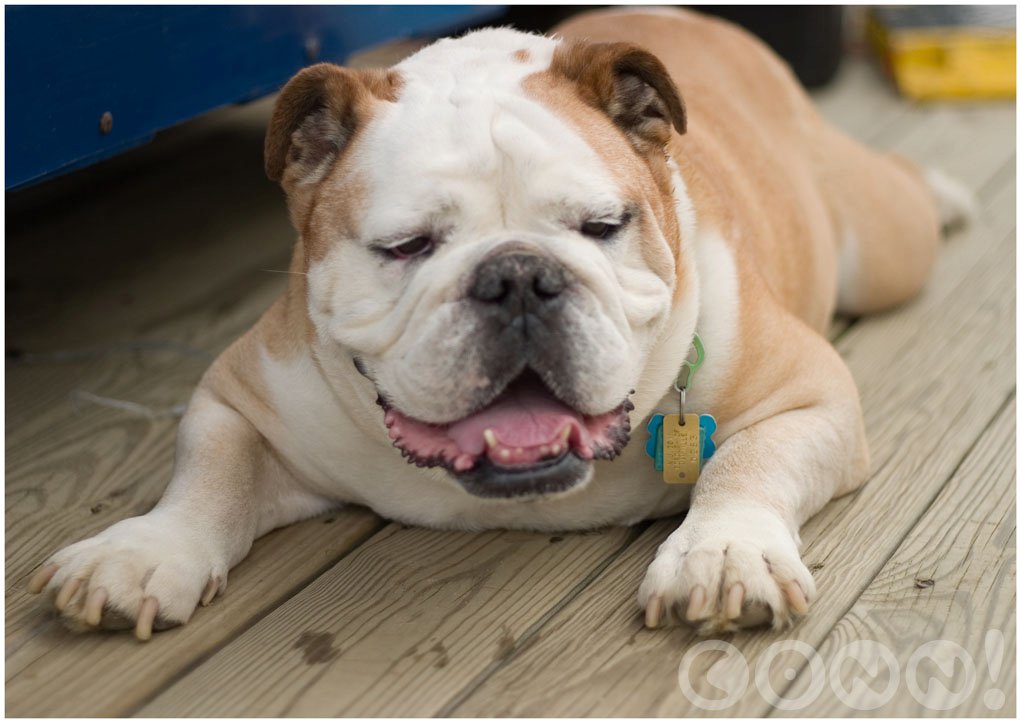
The Breed History
Many years ago in the British Isles, a tough dog was developed
whose purpose was bull baiting and it is thought that from this
stock the modern bulldog arose. The first breed standard was drawn
up in 1964.
Breeding for Function
As bull baiters, the breed ancestors possessed the unusual courage
and ferocity needed to pursue bulls, but once fighting sports were
outlawed in the British Isles in 1835, fanciers sought to continue
the breed. In modern days, the breed is widely kept as a companion
dog, having had a gentle temperament successfully selected for.
Physical Characteristics
Height at Withers: 12-14" (30.5-35.5 cm)
Weight: 50 lb (22.5 kg), female 40 lb (18 kg)
Coat: The short, flat glossy coat is straight, the hairs are fine, and
the skin is quite loose especially around the neck area. Colors
include brindle, white, red, fawn, and piebald. A small white chest
patch is accepted.
Longevity: 10-12 years
Points of Conformation: These dogs are medium-sized, massive
both across the chest and throughout the body. The dark eyes
are front facing, set low in the skull, are wide set and round, and
moderate in size, the palpebral margins are dark and no nictitans
or sclera should show. The ears are very high and wide set, small
and thin in leather; termed a rose ear in shape and carriage, which
means the folded portion is splayed so that the front is further from
the head than the back. This feature helps distinguish the English
Bulldog from the French Bulldog because the latter has erect bat
ears, and is also smaller in stature.
The head is massive, being both broad and square with a
pronounced stop forming a hollow between the eyes. The muzzle
is very short, upturned, and the nose is broad and colored black.
The flews are very well developed and overhang the lower jaws.
A dewlap is well developed, and the head and face are heavily
wrinkled. The lower jaw is considerably prognathic and prominent
(referred to as chops). The neck is very short and thick, muscular
and well arched. The back is somewhat roached (wheel-backed). The
thorax is deep with rounded ribs. The abdomen is moderately tucked
up. A low set tail is carried low, and the tail tapers and is straight
or screwed, but a curly tail is a fault. Limbs are stout and short
but fairly straight boned. The elbows stand away from the chest
wall. The feet are moderate in size and compact, and are straight
ahead but especially the metatarsals deviate outward. This is due
to so-called cow hocked conformation. Toes are well knuckled and
nails are stubby and strong. The loins sit higher than the shoulder.
The rolling gait is loose-jointed and ambling.
Recognized Behavior Issues and Traits
Reported breed attributes include: Resolute in a confrontation
but kind and gentle with family, children and other pets. Easy to
groom, has a moderate shedding tendency, stable temperament,
good for town and country; even apartments. Low to moderate
exercise needs. Does not tolerate temperature extremes, so needs to
be a housedog. Snoring is common and may also drool. The facial
wrinkles need daily hygiene.
Normal Physiologic Variations
Bulldogs often have to deliver by cesarean section. 8% of all
C-sections in a large study were bulldogs. In Great Britain, 86.1% of
Bulldog litters are c-sections.
Drug Sensitivities
None reported
Inherited Diseases
Hip Dysplasia: Polygenically inherited trait causing degenerative
joint disease and hip arthritis. OFA reports 73.2% affected.
Elbow Dysplasia: Polygenically inherited trait causing elbow
arthritis. OFA reports a high incidence, but too few Bulldogs have
been screened to determine an accurate frequency.
Patella Luxation: Polygenically inherited laxity of patellar
ligaments, causing luxation, lameness, and later degenerative joint
disease. Treat surgically if causing clinical signs. OFA reports 6.2%
affected. Reported 6.1x odds ratio versus other breeds.
Hyperuricosuria (HUU)/Urate Urolithiasis: An autosomal
recessive disease caused by a mutation in the SLC2A9 gene causes
hyperuricosuria and predisposes to urate bladder stones. Stone
formation is predominantly seen in males. Bulldogs have a 7.9x
Odds Ratio of forming urate bladder stones versus other breeds. A
direct genetic test is available.
Anasarca (Lethal Congenital Edema): Anasarca occurs in
the breed. Puppies are born dead and edematous. Can also be
associated with cleft palate. Segregation analysis indicates an
autosomal recessive mode of inheritance.
Disease Predispositions
Brachycephalic Complex: Stenotic nares, elongated soft palate,
everted laryngeal saccules, laryngeal collapse, and occasionally
hypoplastic trachea. Reported to cause obstructive sleep apnea
in the breed. Can cause secondary bronchial collapse. Dorn reports
a 29.27x odds ratio for elongated soft palate versus other breeds.
Identified in 19.2% of Bulldogs in an Australian study. One study
showed the Bulldog as the most frequently affected breed, and an
overall surgical curative rate of 94.2%.
Distichiasis: Abnormally placed eyelashes that can cause secondary
corneal ulceration. Identified in 15.74% of Bulldogs CERF examined
by veterinary ophthalmologists between 2000-2005. CERF states
that breeding of affected animals should be discouraged. Dorn
reports a 1.48x odds ratio versus other breeds.
Entropion: Rolling in of the eyelids, which can predispose to
corneal irritation and ulceration. Reported in 14.43% of Bulldogs
CERF examined by veterinary ophthalmologists between 2000-2005.
Dorn reports a 4.37x odds ratio versus other breeds.
Ectropion: A rolling out of the eyelids, that can cause tear pooling,
conjunctivitis, and frequent infection. Reported in 8.85% of
Bulldogs CERF examined by veterinary ophthalmologists between
2000-2005. Dorn reports a 4.37x odds ratio versus other breeds.
Retinal Dysplasia: Focal folds and geographic retinal dysplasia are
seen in the breed. Dogs with the geographic form should not be
bred. Reported in 7.54% of Bulldogs CERF examined by veterinary
ophthalmologists between 2000-2005.
Prolapsed Gland of the Nictitans (Cherry Eye): Occurs at a high
frequency in the breed. This condition is secondary to chronic
conjunctivitis, usually of an allergic nature.
Hypothyroidism: Inherited autoimmune thyroiditis. 4.2% positive
for thyroid auto-antibodies based on testing at Michigan State
University. (Ave. for all breeds is 7.5%.).
Stifle Osteochondritis Dessicans (OCD): Polygenically inherited
cartilage defect. Causes stifle joint pain and lameness in young
growing dogs. Mild cases can resolve with rest, while more severe
cases require surgery. Reported 44.2x odds ratio versus other breeds.
Keratoconjunctivitis Sicca (KCS, Dry Eye): An abnormality of the
tear film, resulting in ocular irritation and/or vision impairment. Age
of onset 2-5 years. Treatment with topical ocular lubricants and
anti-inflammatory medication. CERF does not recommend breeding
any Bulldogs with KCS.
Cystine Urolithiasis: Bulldogs have a higher incidence of Cystine
(32.3x OR) bladder stones compared to other breeds. Cystine stones
are due to a defect in cystine metabolism.
Chronic Superficial Keratitis (Pannus): Corneal disease that can
cause vision problems due to pigmentation. Treatment with topical
ocular lubricants and anti-inflammatory medication. Identified
in 1.97% of Bulldogs CERF examined by veterinary ophthalmologists
between 2000-2005. CERF does not recommend breeding any
Bulldogs with pannus.
Persistent Pupillary Membranes: Strands of fetal remnant
connecting; iris to iris, cornea, lens, or involving sheets of tissue. The
later three forms can impair vision, and dogs affected with these
forms should not be bred. Identified in 1.64% of Bulldogs CERF
examined by veterinary ophthalmologists between 2000-2005.
Cataracts: Anterior, posterior, equatorial, and capsular cataracts
occur in the breed. Identified in 1.31% of Bulldogs CERF examined
by veterinary ophthalmologists between 2000-2005. CERF does not
recommend breeding any Bulldogs with a cataract.
Pododermatitis/Interdigital Cysts: Affected dogs can present
with erythema. thickening of the skin, alopecia, pyoderma, nodules,
ulcers haemorrhagic bullae, and draining tracts. Increased risk
versus other breeds.
Pulmonic Stenosis: Bulldogs are the most common breed to have
pulmonic stenosis, with an odds ratio of 19.2x versus other breeds.
This congenital heart abnormality in Bulldogs frequently is caused
by a circumpulmonary left coronary artery originating from a single
right coronary artery.
Demodicosis: Generalized demodicosis has an underlying
immunodeficiency in its pathogenesis. Dorn reports a 3.0x odds
ratio versus other breeds.
Hiatal Hernia: The Bulldog has the highest incidence of hiatal
hernia for all breeds. The most common presentation is reflux
esophagitis. Treatment is with surgery.
Spina Bifida: Review of cases to veterinary teaching hospitals
suggests a high incidence of spina bifida in the English Bulldog.
Urinary and fecal incontinence is the most common clinical sign.
Radiographs and myelography confirm the diagnosis.
Urethrorectal Fistula: Several case reports are in the literature
of Bulldogs with congenital urethrorectal fistulas. Affected
dogs present with urine dribbling the anus, and chronic cystitis.
Treatment is with surgery.
Cryptorchidism, Deafness, Factor VII Deficiency, Factor VIII
Deficiency, Fold Dermatitis, Hemivertebra, Hydrocephalus,
Laryngeal Paralysis, Myelodysplasia, Sacrocaudal Dysgenesis,
Seasonal Flank Alopecia, Subaortic Stenosis, Supernumerary
Teeth, Tetralogy of Fallot, Ventricular Septal Defect, von
Willebrand's Disease, and Wry Mouth are reported.
Isolated Case Studies
Cerebellar Cortical Degeneration: Three young full-sibling Bulldogs
presented with a wide-based stance, marked hypermetria, spasticity,
and intention tremors of the head and trunk with loss of balance.
Pathology showed a loss of cerebellar Purkinje and granule cells.30
Acrochordonous Skin Plaques: Clinical report of numerous, closely
associated acrochordons forming a plaque, preferentially located at
the dorsal neck of two Bulldogs.
Cor Triatriatum Dexter: A 3.5 month old male Bulldog with ascites
and a history of respiratory distress was diagnosed at autopsy with
the heart anomaly cor triatriatum dexter.
Parotid Duct Sialolithiasis: Two case reports are in the literature;
a 7 year old male Bulldog and a 3 year old male Bulldog. Blockage
of the parotid duct with a sialolith causes chronic facial swelling.
Surgical removal of the sialolith, or of the salivary gland and duct is
curative.
Sperm Tail Defects: A 2 year old Bulldog was identified with 93.3%
of spermatozoa with morphological tail defects, including strong
folding, coiling and fracture of sperm midpieces and tails, axonemal
defects and the presence of swollen and unevenly distributed
mitochondria. The defect was considered to be genetic in origin.
Genetic Tests
Tests of Genotype: Direct test for HUU is available from the
UC-Davis VGL and the Animal Health Trust.
Tests of Phenotype: CHIC Certification: Required testing includes
patella evaluation (minimum 1 year of age) and congenital cardiac
exam (by a cardiologist, preferably by echocardiography). (See CHIC
website; caninehealthinfo.org).
Recommended: hip and elbow radiographs, CERF eye examination,
and thyroid profile including autoantibodies.
Miscellaneous
- Breed name synonyms: English Bulldog
- Registries: **AKC, UKC, CKC, KCGB (Kennel Club of Great Britain),
ANKC (Australian National Kennel Club)-as British bulldog, NKC
(National Kennel Club) **Just termed Bulldog in AKC
- AKC rank (year 2008): 8 (23,413 dogs registered)
- Internet resources: The Bulldog Club of America:
thebca.org/
The British Bulldog Club: britishbulldogclub.co.uk
Bulldog Club of Central Canada:
bulldogclubofcentralcanada.net/
Photo Gallery of Breed - Bulldog - Dog Breed
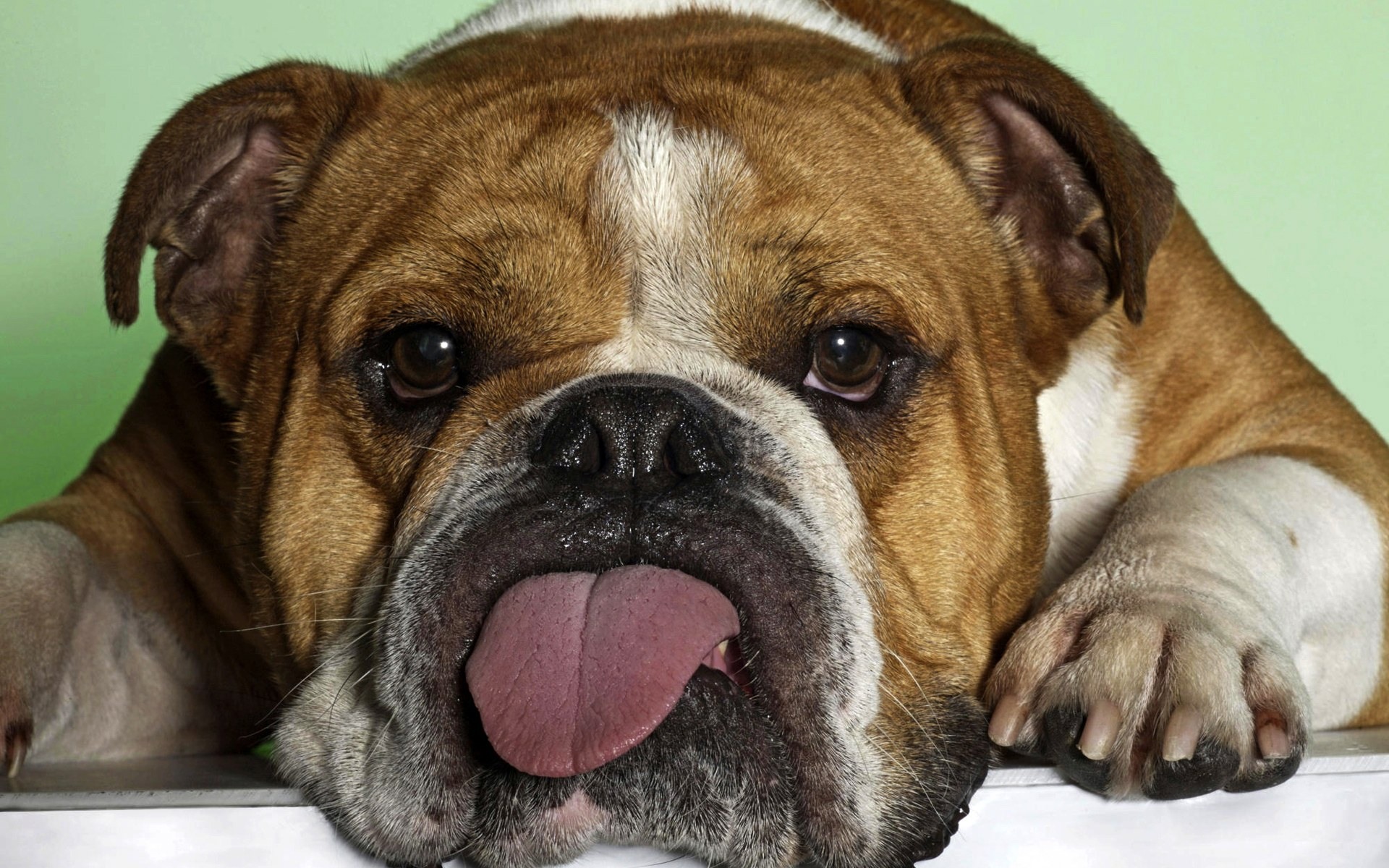
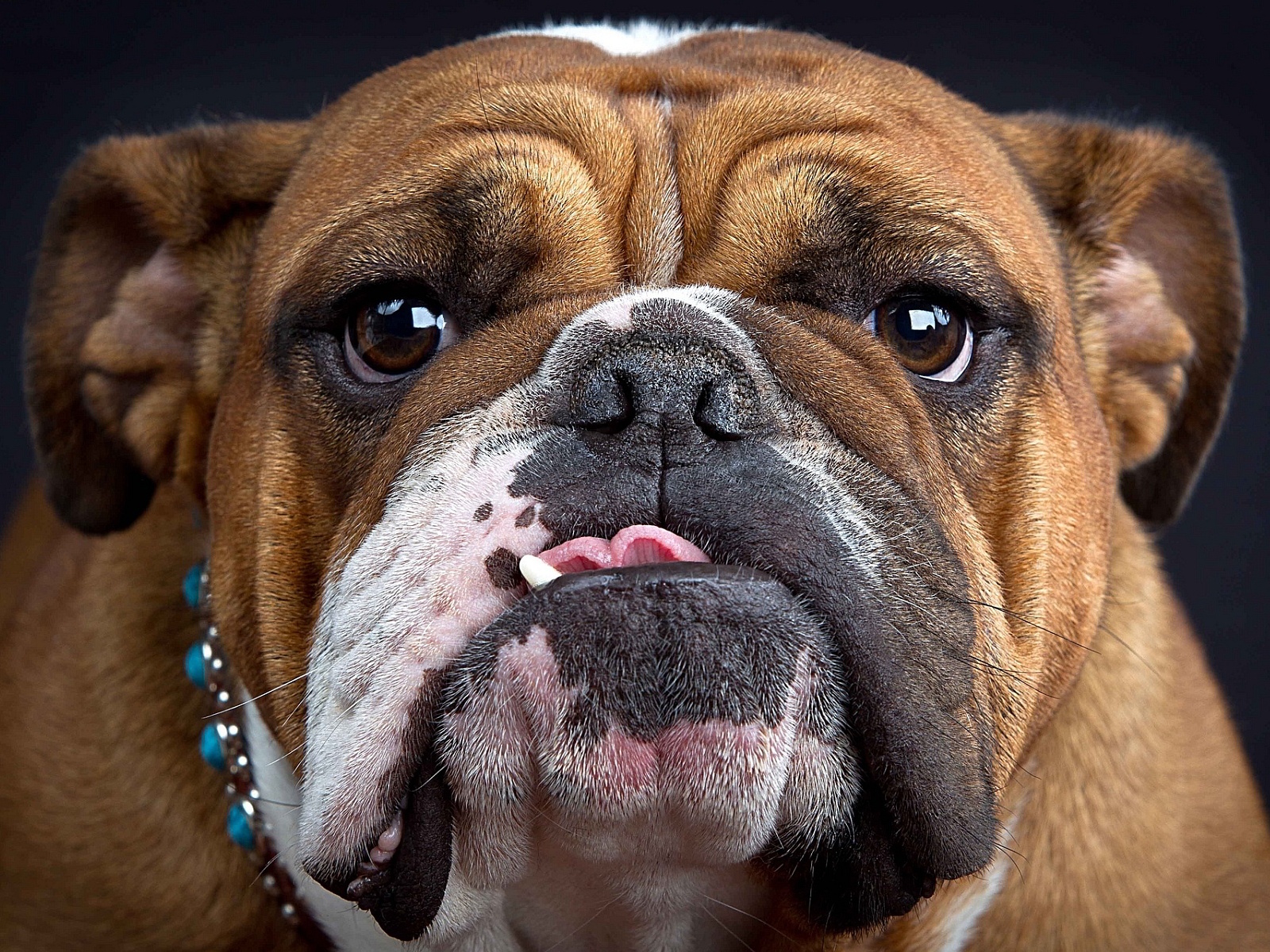
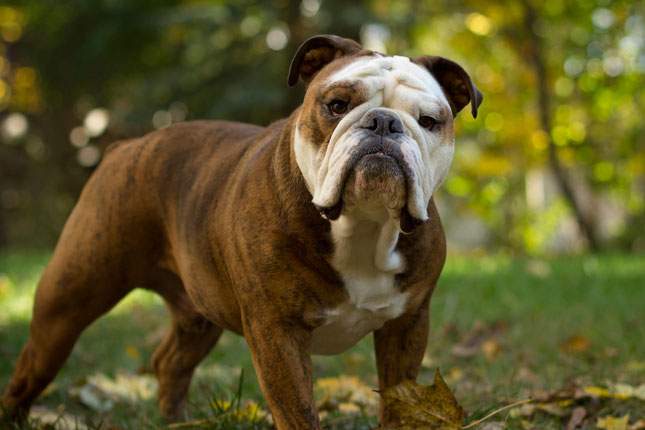

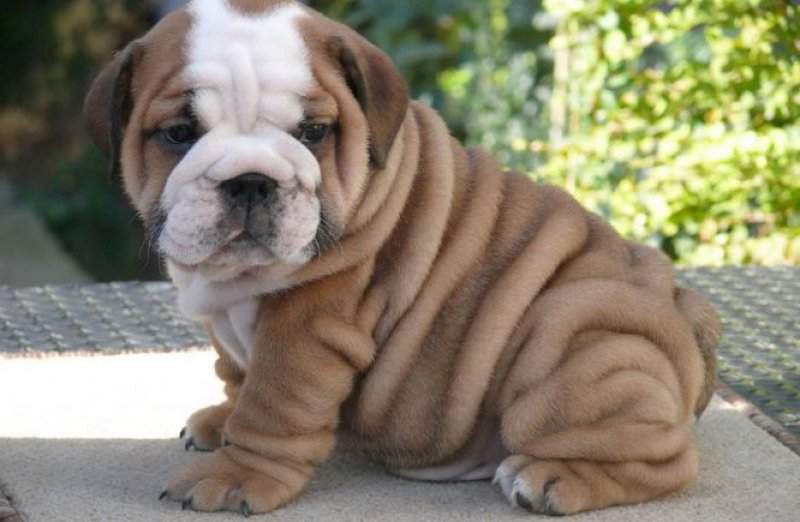

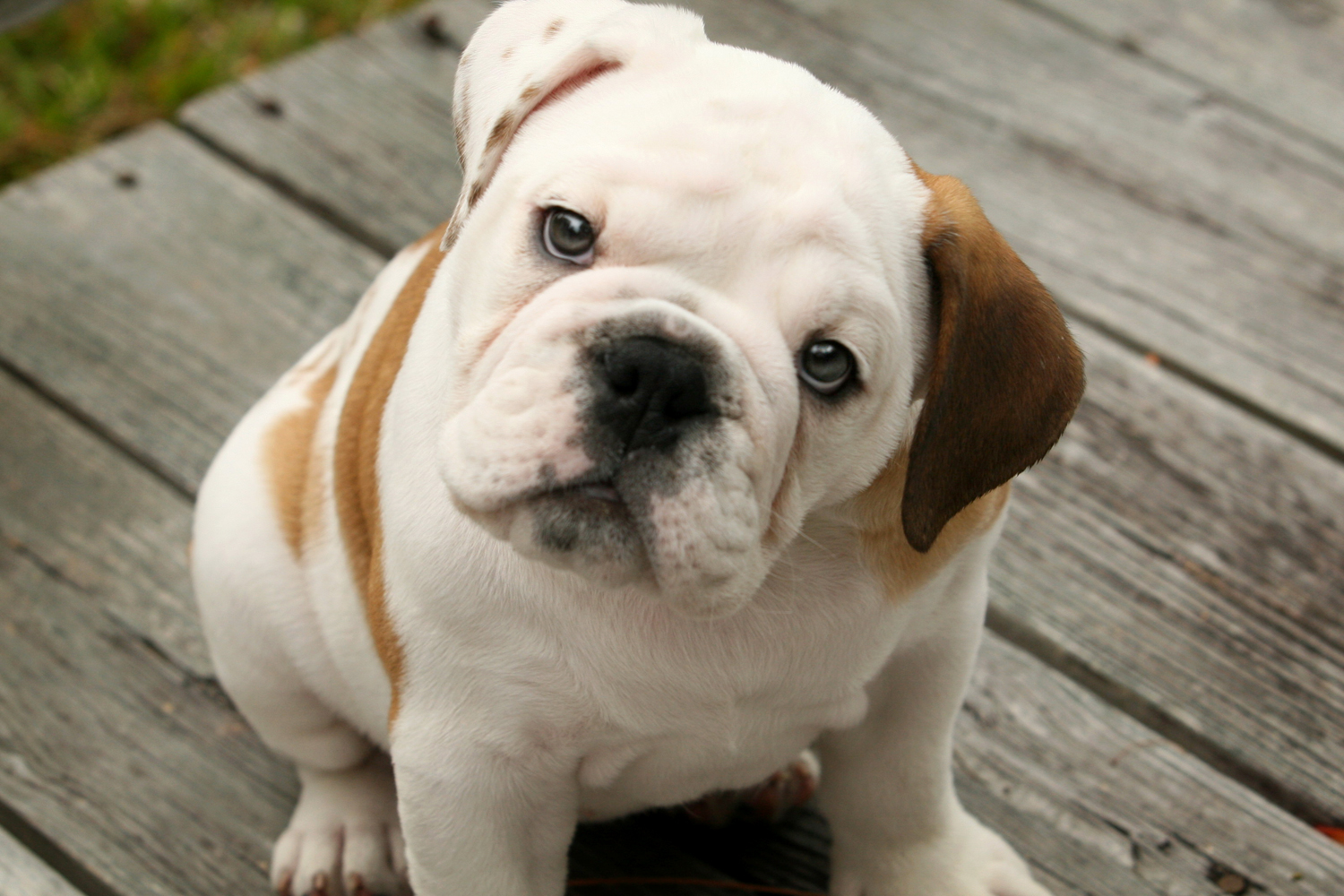

 Animalia Life
Animalia Life